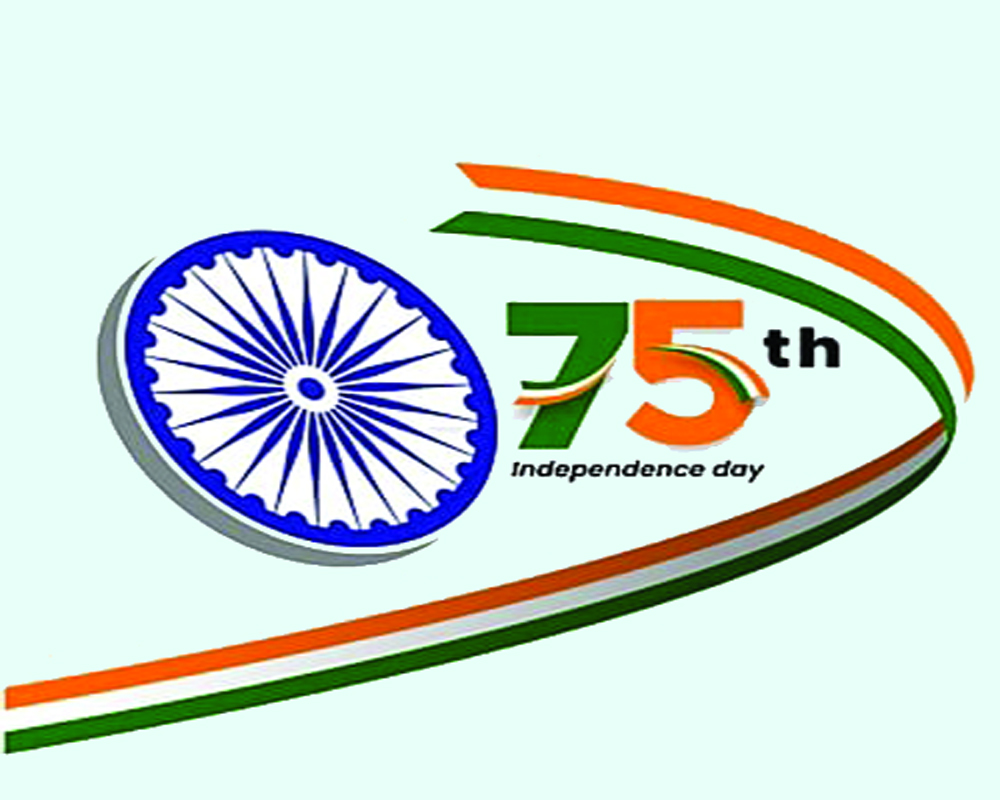India is moving towards its ambition to becoming a global power, it needs a roadmap for the future
On the evening of August 14, 1947, the then Viceroy, Lord Mountbatten, and his wife Edwina settled down to watch a Bob Hope movie, “My Favourite Brunette.” A few yards away, in the Central Hall of Parliament, Pandit Jawaharlal Nehru rose to make his famous “Tryst with destiny” speech announcing India’s Independence. He declared, “At the stroke of the midnight hour, when the world sleeps, India will be awake to life and freedom." Thus, on August 15, two independent nation-states, Hindu-majority India and Muslim-majority Pakistan, were born. It is befitting to look back at and look forward to when India turns 75.
It has been a long and bumpy journey. The freedom fighters recognized that with the hard-won independence came tremendous challenges and responsibilities. India had 30 crore people in 1947 which has grown to 1.35 billion in these 75 years.
The primary challenge in 1947 was to remain united, sovereign, democratic, and free, harmonious, and diverse. Partition left behind a mess. However, disproving many prophets of doom predicting India's Balkanisation, the country has moved forward in many areas. There were tall leaders like Mahatma Gandhi, Nehru, and Sardar Patel who laid the foundation for building the country. Indeed, it is the story of success, yet a story of unfulfilled potential.
In the initial stages, the challenges were too many. From politics to social life, Indians have witnessed significant changes in their lives. India faced challenges from neighbouring countries, militants, separatists, Naxals, regionalism, and Indira Gandhi's famous 'foreign hand' which she met boldly.
The country has taken many steps in other areas like information technology, pharmaceuticals, and space and nuclear fields. However, several rural areas are yet to get basic facilities like water and electricity. The second challenge was to establish democracy. Except for a brief period during Emergency, democracy survived in a country that was bogged down with illiteracy, massive poverty, and other ills. There were challenges in education, health, and other sectors, and they still remain as the recent pandemic proved the inadequacy.
Sixteen times power was transferred without any hitch in the past 75 years. Even authoritarian rulers chose to take the democratic route. Moreover, most political parties had been given a chance to rule the country as a single-party majority or coalition. This was possible because of the democratic principle the country embraced. Today India can boast of being the largest democracy in the world.
But some other elements of democracy have also suffered. The values of the freedom struggle based on which Independence was achieved in 1947 are under threat. Communalism and divisive tendencies are spreading. There is a growing influence of money power and muscle power in politics. Institutions have become weaker. Political parties resort to the crudest, violent and polarising techniques to mobilize voters in their quest for power. There is a need for a political consensus to restore those lost values.
India is a young country with a productive population. There is an aspiring, emerging middle class. They should be given the right direction. There is a need for population regulation, but it has to be voluntary and not forced as had happened during Emergency.
On the economic side, the country has made phenomenal progress in 75 years. The year 1991, when the country embraced liberalization, is a landmark. Our internet penetration is the second largest after China. We have a revolution of start-ups in terms of latest technology. India has hit new heights in physics, maths, chemistry, literature, music, film, sports, or space. Four Indians have won the Nobel Prize. But simultaneously, there is also a broader disparity in skills development.
In foreign policy, India has become the leader of the subcontinent. However, she has lost her premier position as the champion of the non-aligned world. She has come closer to the United States in a unipolar world. It is also a nuclear country, a member of G 20 and other world fora.
Now that India is moving towards its ambition to becoming a global power, it needs a roadmap for the future. Looking forward, Prime Minister Narendra Modi has identified five agendas for the future. “Freedom Struggle, Ideas at 75, Achievements at 75, Actions at 75 and Resolve at 75 — we have to move forward with these five aspects.”
Every Indian has a role and should feel proud of being an Indian and take a vow to share in building ‘New India.” This would take the country to new heights and be a befitting tribute to India's 75th birthday.
(The writer is a senior journalist. The views expressed are personal. )


























